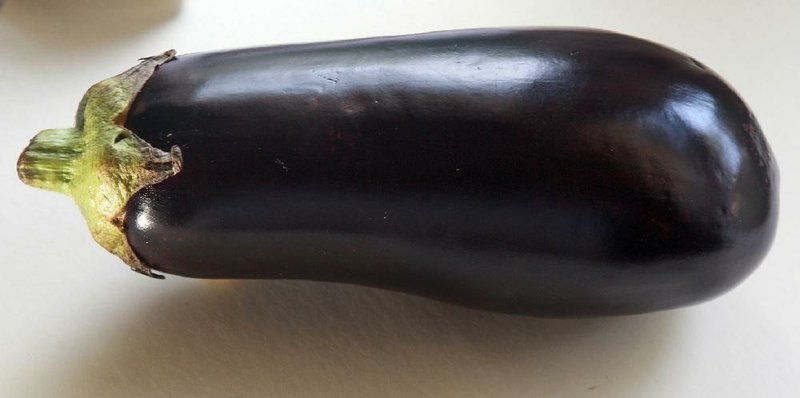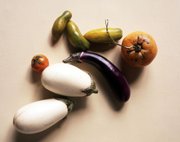AUGUST
We were skating through this summer feeling pretty good about the weather when late July hit and things took a nosedive. It has gotten hot, hotter and hottest in a short period of time.
Some areas are getting downpours while others are bone dry. Everyone needs a rain gauge but better yet, they need to know the needs of the plants in their yards. In my shady gardens, my sprinkler system is handling things with no help from me, but in full sun, in containers or rockier parts of the yard, supplemental watering is needed. So pay attention.
You don't want to go to all the effort and expense of planting a garden only to let a few weeks of hot, dry weather kill it. Water is the most important factor of gardening success in summer. Mulch will definitely make your job easier, but nothing beats a slow, steady drink of water.
• Planting doesn't feel like a top priority when it is this hot, but now is a great time to start a fall vegetable garden. We can start planting cool-season things like greens, broccoli and cabbage, but we can also replant almost all of the warm-season crops for a fall harvest. Water and mulch will be vitally important.
• If you have been watering, you are still harvesting summer's crops, and some plants -- okra, eggplant, Southern peas and sweet potatoes -- are thriving in the heat.
• Tomato production slows when daytime temps exceed 95 degrees or nights stay warm and humid. But water and wait, and they will begin to bear again. It won't be long before tomato plants are available to plant again for a fall garden.
• If your plants are troubled by insects or diseases and you plan to spray, or even if you are simply fertilizing, make sure the plants are amply watered first. Even the most innocuous amendment can lead to damage if plants are stressed.
• Work smart and get things done early in the day or after the sun sets. If you are watering late in the day, try to get the job done early enough so the foliage dries before dark. Too much moisture on the foliage in the evening leads to more diseases.
• Figs are in season, and most people have a lot of them on their trees. Birds, squirrels and raccoons like them just as much as you do, so consider bird netting, at least a deterrent at the base of the tree. Don't let your figs get too dry or they will drop before they ripen.
• We also still have peaches in season and early apples are here as well. I let the farmers grow those, as they are difficult to manage in a home landscape. Plenty should be readily available at farmers markets statewide.
• Continue to deadhead perennials and even some shrubs. Butterfly bush (Buddleia), summer spirea and crape myrtles will continue to bloom if spent flowers are removed, preventing seed set. Basil needs to be clipped to keep its foliage growing, and black-eyed Susans (Rudbeckia), purple coneflower (Echinacea) and Gaillardia will all set seeds if you don't deadhead. Most of us would rather have flowers now than seeds, so continue to deadhead for another month or two. You can allow seeds to set in the fall.
• Tropical flowers are in their element and doing well. To keep them thriving, don't forget to fertilize, but do so lightly and make sure there is ample water.
• Some summer annuals are suffering while others are thriving. It depends on what you are growing and how you have cared for them. If yours look great, continue to water and fertilize. If they are looking a little spent, give them a light haircut and a light dose of fertilizer, and they can rebound.
• Keep in mind that we have several more weeks of warm if not hot weather, and most annuals will provide color up through October or November. If you have the energy to replant annuals, there are plants at local nurseries, and often at bargain prices. A few well-placed plants, given ample water, can give you instant color.
• Take note of which plants are faring well and which are (or were) water needy. I have been quite impressed with Angelonia, periwinkle, lantana and pentas this season, and the SunPatiens are pretty spectacular, too.
PLANT OF THE MONTH
Eggplant was not common in our gardens or our kitchens until the past decade or so, but now for many of us they are a staple.
Eggplants belong to the nightshade family, which includes tomatoes, peppers and potatoes. Unlike tomatoes, eggplants thrive in the hottest heat of summer, continuing to set fruit even on broiling, humid days.
The fruits grow on a short, stalky bush similar to peppers, and rarely need staking, although if your plants grow tall and are loaded with fruit, they would welcome support.
Most people are familiar with the larger fruited varieties such as "Black Beauty," but the Asian varieties with the long, tapered fruits, such as "Ichiban," are gaining ground. There also are small, egg-shaped varieties whose mature shades are white, yellow and orange, along with stripes and spots.
All eggplants need warm conditions to grow, so don't plant too early in the spring; allow the soil to warm up. Eggplants will continue to grow, bloom and set fruit until the really cool days of fall. The main pest problem is the flea beetle, which eats tiny holes in the leaves and causes a stippling effect on the fruit.
While eggplants can be harvested while small or left to grow large, under-ripe or over-ripe fruits are a bit bitter. For the larger fruited forms, the outer rind on ripe fruit will be deep, dark purple (aubergine), with shiny skin. If the skin begins to dull or the color fades, they are getting too ripe.
The smaller fruited forms will usually stop growing larger when they are ripe, and the outer skin will become glossy.
Although we have all done it, try not to pull the mature fruits off by hand, since they are firmly attached and tugging can damage the plant. Use pruning shears to harvest and leave a short stem attached.
Eggplants will last about a week in the refrigerator. They can be grilled, fried, sauteed or roasted.
If you find you've harvested too many to eat at dinner, roast them in the oven along with peppers, garlic and tomatoes, and then puree everything in the blender for an outstanding snack dip.
Janet B. Carson is a horticulture specialist for the University of Arkansas Cooperative Extension Service.
HomeStyle on 07/30/2016

